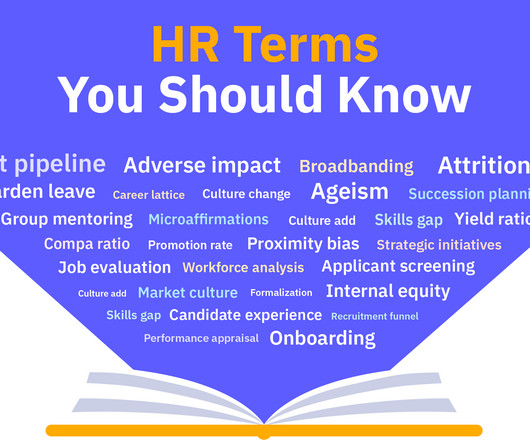The Compehensive Dictionary of HR Terms To Know [In 2024]
AIHR
MAY 29, 2024
Compa ratio Compa ratio , also known as a comparative ratio, is a metric that compares an individual’s or group’s salary to the midpoint of a defined salary range. HR term example: “The HR department analyzed the compa ratio to assess the fairness of our salary distributions.” ” 3. ” 9. ” 10.
















Let's personalize your content